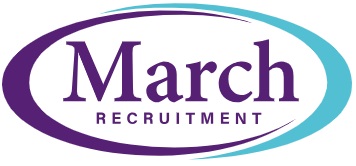Workplaces today are more diverse and interconnected than ever before and Employee Resource Groups (ERGs) have become a familiar feature of this new landscape. What began as a grassroots effort to give under-represented employees a voice has grown into a widespread practice that many organisations now see as essential. From global corporations to small enterprises, more and more employers are recognising the value of employee-led networks that bring people together through shared identities, experiences and interests.
The history of ERGs
ERGs originated during the civil rights era in the US, as spaces for marginalised employees to find support and raise issues. Over time their role has broadened. Now they cover many domains: ethnicity, gender, LGBTQ+ inclusion, disability and neurodiversity, mental health, veteran status, carers, working parents and interest-based groups (e.g. tech, sustainability).
Today, the best ERGs successfully balance community and business impact and can be part of a business’ core strategy.
The data on ERGs
Recent data from 2024 and 2025 shows that ERGs are becoming increasingly central to how organisations think about inclusion, engagement and business performance. In the United Kingdom, more than 61 per cent of companies are now increasing their budgets for ERGs, reflecting a growing recognition of their value.
Globally, the trend is just as strong. Every organisation listed in the DiversityInc Top 50 Companies for Diversity in 2024 operates one or more ERG programmes, and around nine out of 10 Fortune 500 companies do the same. The vast majority of these groups are led by employees who volunteer their time, with most ERG leaders spending an average of three hours each week managing activities, mentoring or organising events.
Financial performance also appears linked to inclusion. Research published in 2024 found that companies with strong diversity and inclusion programmes, including active ERGs, are 21 per cent more likely to outperform their competitors in profitability. These groups are not simply about social engagement; they are delivering measurable business impact.
Technology companies continue to lead the way in using ERGs to drive innovation. Microsoft, for example, operates nine global ERGs focusing on areas such as gender equality, accessibility, disability inclusion and family support. Insights gathered through these groups have directly influenced product development, including features within Microsoft Copilot that make technology more accessible to a wider audience.
Within the UK, ERGs are also taking a more active role in shaping mental health and wellbeing strategies. Many organisations now rely on these groups to identify gaps in support, propose new wellbeing policies and run awareness campaigns.
However, not all the news is positive. Some employers, particularly in the United States, have scaled back formal diversity departments or reduced ERG funding in the past year. This has led to a stronger emphasis on proving the business case for ERGs, ensuring that every initiative is backed by data, measurable outcomes and visible leadership support.
Why ERGs matter
1. Boosting engagement, retention and performance
Employees who feel seen, supported and part of a community are more likely to stay and contribute fully. Some studies suggest that employees whose workplaces offer strong communities (like ERGs) have higher retention rates.
Additionally, communities and mentoring (often via ERG activities) help younger staff, especially millennials, feel more connected, in one finding, those with mentors were twice as likely to stay five years or more.
2. Driving innovation and market insight
When individuals from diverse backgrounds gather, fresh ideas emerge. ERGs can act as internal focus groups, offering insight into how products, services or communications land with underrepresented segments.
Many organisations have used ERG feedback to adjust branding, policy, accessibility and customer outreach.
3. Strengthening inclusion and psychological safety
ERGs provide safe forums to voice challenges, share lived experience and give feedback upward. They help reduce isolation, especially in large or hybrid organisations, and foster belonging.
They can also help to surface structural barriers, unconscious bias and exclusionary practices that might otherwise go unnoticed.
4. Supporting wellbeing and mental health
Groups focused on wellbeing, mental health, caregiving or life transitions (e.g. menopause, grief, carers) can complement HR programmes. They help monitor absence data, provide peer support, signpost resources and advocate for accommodations.
5. Enhancing employer brand and recruitment
Active ERGs send a strong signal to candidates: this is a workplace that values inclusion. In some firms, 15–20 % of new employees reported the organisation’s DEI and ERG presence influenced their decision to join.
Moreover, jobseekers (especially from underrepresented groups) rank diversity and inclusion as key factors when evaluating employers.


